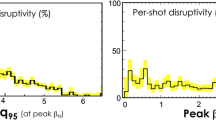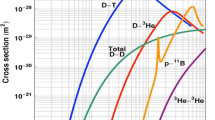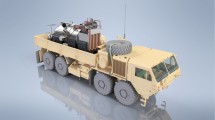Abstract
The Fusion Simulation Project (FSP) is envisioned as a 15 year, $20M/year multi-institutional project to develop a comprehensive simulation capability for magnetic fusion experiments with a focus on the International Thermonuclear Experimental Reactor (ITER). The FSP would be able to contribute to design decisions, experimental planning and performance optimization for ITER, substantially increasing ITER’s likelihood of success and its value to the US Fusion Program. The FSP would be jointly supported by the DOE Office of Fusion Energy Sciences and the DOE Office of Advanced Scientific Computing Research. The potential for develo** this simulation capability rests on the exponential growth of computer power over the last 50 years, the progress in physics understanding developed by the international fusion program and the continued progress in computational mathematics that enables the use of the new “ultra-scale” computers to solve difficult mathematical problems. The initial concept for the FSP was developed by the Fusion Energy Sciences Advisory Committee Integrated Simulation and Optimization of Fusion Systems Subcommittee (J. Dahlburg and J. Corones, et al., J. Fusion Energy, 20(4), 135–196.). The DOE asked the FSP Steering Committee to develop a project vision, a governance concept and a roadmap for the FSP. The Committee recommends that the FSP consist of three elements: a production component, a research and integration component, and a software infrastructure component. The key challenge is develo** components that bridge the enormous distance and time scales involved with the disparate physics elements of tokamak performance. The committee recommended that this challenge be met through “Focused Integration Initiatives” that would first seek to integrate different physics packages with disparate distance and time scales. An example is the integration of Radio Frequency (RF) Current Drive and Magnetohydrodynamics (MHD) components to produce an integrated capability to simulate the use of RF current drive to suppress MHD instabilities. This report also defines the requirements for a governance structure. The FSP Steering Committee judged that the project begin with a conceptual design phase lasting one or two years and be followed by a staged ramp-up over a few years to the full funding level.
Similar content being viewed by others
References
J. Dahlburg J. Corones et al. (2001) J. Fusion Energy 20 IssueID4 135–196 Occurrence Handle10.1023/A:1023433001854
Author information
Authors and Affiliations
Corresponding author
Rights and permissions
About this article
Cite this article
Post, D.E., Batchelor, D.B., Bramley, R.B. et al. Report of the Fusion Simulation Project Steering Committee. J Fusion Energ 23, 1–26 (2004). https://doi.org/10.1007/s10894-004-1868-0
Published:
Issue Date:
DOI: https://doi.org/10.1007/s10894-004-1868-0




